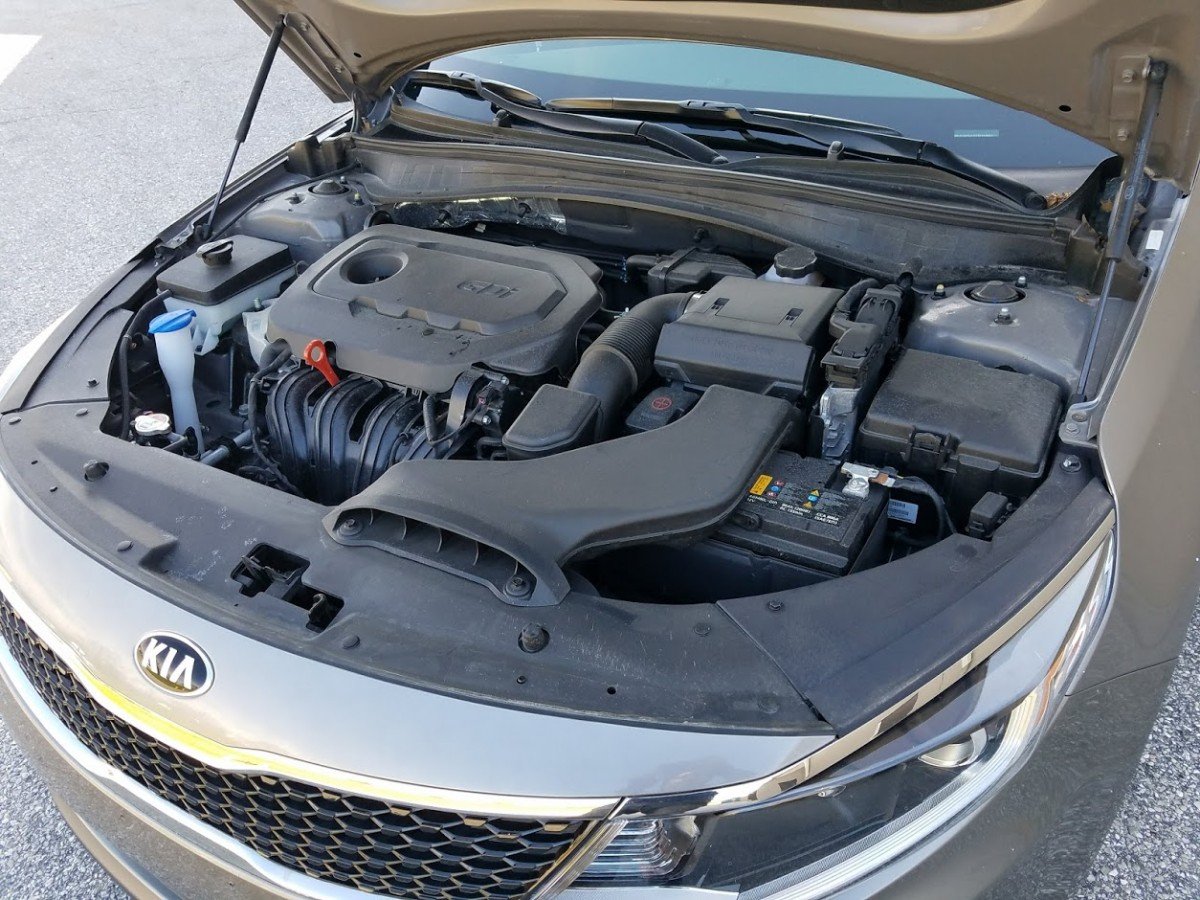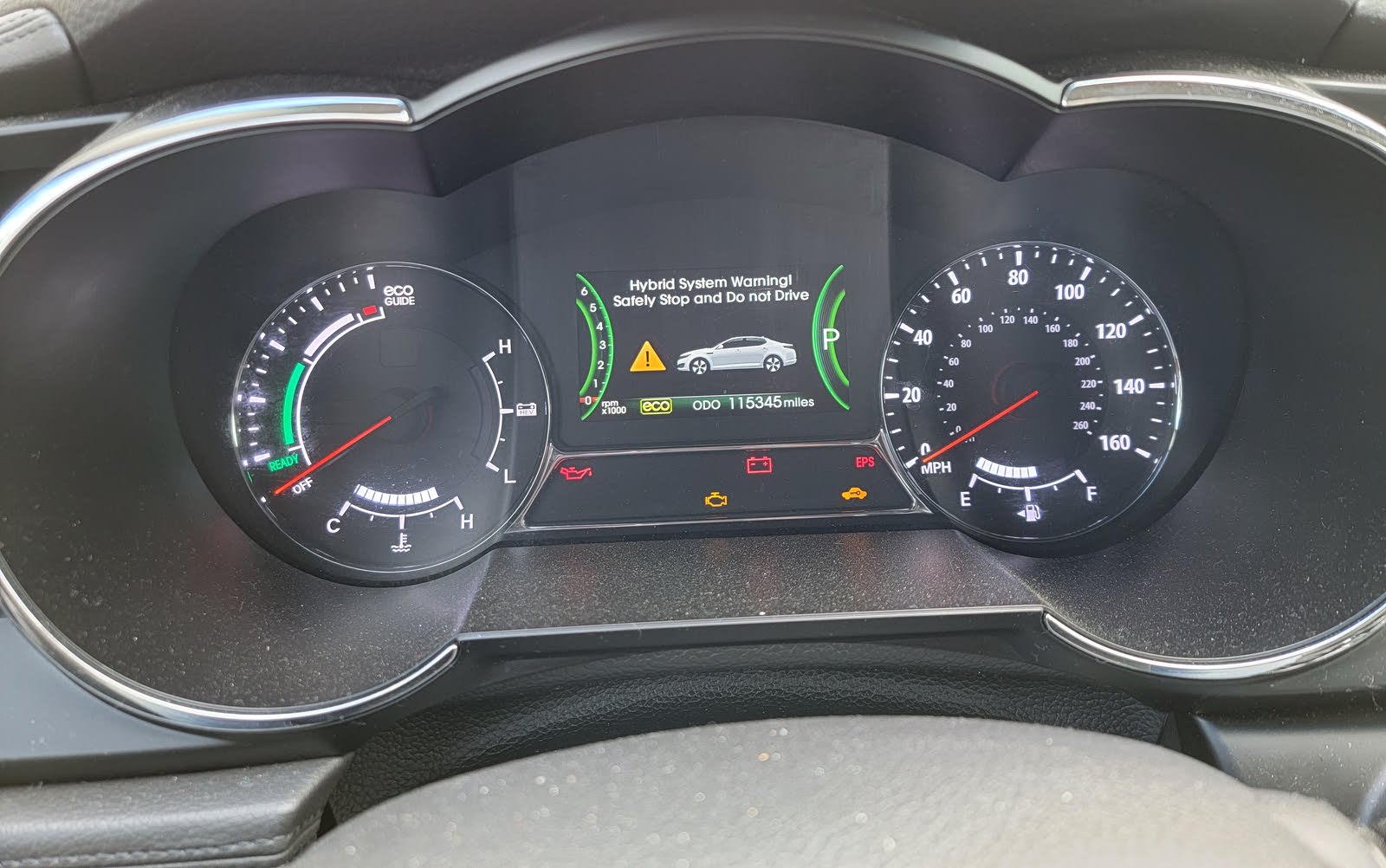Kia Optima transmission problems often include slipping, rough shifting, and delayed engagement. These issues can lead to decreased performance and potential safety hazards.
The Kia Optima is known for its stylish design and reliability, but some owners face transmission troubles. Common symptoms include unusual noises, warning lights, and difficulty in gear shifting. These problems can stem from faulty sensors, low transmission fluid, or software glitches.
Addressing these issues promptly is crucial to avoid costly repairs and maintain optimal vehicle performance. Regular maintenance and timely inspections can help prevent transmission failures. Understanding these potential problems can empower Kia Optima owners to take action and ensure their vehicle runs smoothly. Taking proactive steps enhances driving experience and safety on the road.

Credit: www.youtube.com
Introduction To Kia Optima Transmission Issues
The Kia Optima is a popular midsize sedan known for its style and comfort. However, some owners experience transmission problems. These issues can affect performance and safety. Understanding these problems helps in timely repairs.
Common Symptoms
Owners may notice several common symptoms indicating transmission issues. Here are some key signs to watch for:
- Slipping Gears: The vehicle unexpectedly shifts gears.
- Delayed Engagement: There is a noticeable delay when shifting into gear.
- Warning Lights: Transmission or check engine light appears on the dashboard.
- Unusual Noises: Grinding or whining sounds when the vehicle is in gear.
- Fluid Leaks: Puddles of red or brown fluid under the car.
Impact On Performance
Transmission issues can significantly impact vehicle performance. Here are some effects:
| Impact | Description |
|---|---|
| Acceleration Problems | Slow or unresponsive acceleration when pressing the gas pedal. |
| Reduced Fuel Efficiency | Increased fuel consumption due to poor shifting. |
| Loss of Control | Difficulties in controlling the vehicle during speed changes. |
| Increased Wear | Higher wear on engine components leading to expensive repairs. |
Addressing these transmission problems early prevents further damage. Regular maintenance helps ensure smooth operation.

Credit: www.youcanic.com
Identifying The Problem
Transmission issues in the Kia Optima can cause many headaches. Early identification is key to avoiding costly repairs. Knowing the signs helps drivers act quickly. Here are the tools and methods to identify these problems.
Diagnostic Tools
Using the right diagnostic tools makes identifying transmission issues easier. Here are some popular tools:
- OBD-II Scanner: Reads error codes from the vehicle.
- Transmission Fluid Tester: Checks the condition of the fluid.
- Pressure Gauge: Measures fluid pressure in the system.
These tools help pinpoint specific problems. Regular checks can prevent bigger issues down the road.
Professional Assessment
Sometimes, professional help is necessary. A trained technician can provide a thorough assessment. Here’s what to expect during the evaluation:
- Visual Inspection: Technicians check for leaks and damage.
- Fluid Analysis: They analyze the transmission fluid for contaminants.
- Road Test: A test drive helps identify shifting issues.
A professional assessment ensures accurate diagnosis. This step is crucial for effective repairs.
Quick Fixes For Immediate Relief
Experiencing transmission issues in your Kia Optima can be stressful. Some problems can be resolved quickly. Here are two effective solutions to try before seeking professional help.
Fluid Check And Replacement
Transmission fluid plays a vital role in your vehicle’s performance. Low or dirty fluid can cause shifting problems. Follow these steps to check and replace your fluid:
- Park your car on a level surface.
- Open the hood and locate the transmission dipstick.
- Pull out the dipstick and wipe it clean.
- Reinsert the dipstick and remove it again to check fluid level.
If the fluid is low, add the recommended type:
- Kia ATF SP-IV or equivalent.
Inspect the fluid color:
| Color | Meaning |
|---|---|
| Bright Red | Good condition. |
| Brown | Needs replacement. |
| Black | Contaminated; urgent replacement needed. |
Resetting The Transmission Control Module
A reset can help resolve some transmission issues. Follow these steps:
- Turn off your vehicle and remove the key.
- Disconnect the battery cables. Start with the negative terminal.
- Wait for at least 15 minutes.
- Reconnect the battery cables, starting with the positive terminal.
- Start your vehicle and test the transmission.
This reset may clear any temporary issues. If problems persist, consult a professional.
Long-term Solutions
Addressing Kia Optima transmission problems effectively requires long-term strategies. These solutions focus on upgrades and routine maintenance. Implementing these steps can enhance performance and extend the vehicle’s lifespan.
Upgrading Parts
Upgrading specific transmission components can significantly improve reliability. Consider the following options:
- High-Performance Transmission Fluid: This fluid reduces wear and improves shifting.
- Aftermarket Cooler: A cooler helps maintain optimal temperatures.
- Reinforced Gaskets: Stronger gaskets prevent leaks and enhance durability.
- Shift Kit: A shift kit optimizes shifting speed and precision.
These upgrades can lead to better performance and fewer issues over time.
Regular Maintenance Tips
Regular maintenance is key to preventing transmission issues. Follow these tips:
- Change transmission fluid every 30,000 miles.
- Inspect transmission filters regularly.
- Check for leaks and fix them immediately.
- Monitor transmission temperatures during drives.
- Use OEM parts for replacements when needed.
Implementing these maintenance practices can keep your Kia Optima running smoothly.
Diy Tips For Kia Optima Owners
Keeping your Kia Optima running smoothly often requires some hands-on effort. Many owners face transmission problems at some point. With the right tools and knowledge, you can tackle these issues yourself. Here are some valuable DIY tips for Kia Optima owners.
Tools And Materials Needed
- Socket set (metric sizes)
- Wrench set (metric sizes)
- Transmission fluid
- Drain pan for fluid
- Funnel
- Jack and jack stands
- Rags for cleanup
- Owner’s manual for specifications
Step-by-step Guide
- Park on a level surface. Ensure safety before starting.
- Lift the car. Use a jack to elevate the vehicle.
- Locate the transmission fluid dipstick. Check the fluid level.
- Inspect for leaks. Look under the car and around the transmission.
- Replace fluid if necessary. Use the funnel to add new fluid.
- Check for unusual noises. Listen while the engine runs.
- Test drive. Ensure smooth shifting and acceleration.
Regular checks can prevent major issues. Follow these steps carefully. Always refer to the owner’s manual for specific guidance.

Credit: www.cargurus.com
When To Seek Professional Help
Understanding when to get help for your Kia Optima’s transmission is vital. Ignoring problems can lead to greater damage and higher repair costs. Recognizing the signs early can save you time and money.
Signs Of Severe Damage
Watch for these warning signs that indicate serious transmission issues:
- Slipping Gears: The car unexpectedly changes gears.
- Delayed Engagement: There is a delay when shifting from park to drive.
- Unusual Noises: Grinding, whining, or clunking sounds are concerning.
- Fluid Leaks: Puddles of red or brown fluid under the car.
- Warning Lights: The check engine light or transmission warning light is on.
Finding A Trustworthy Mechanic
Choosing the right mechanic can make a big difference. Look for these qualities:
- Experience: Ensure they have experience with Kia vehicles.
- Certifications: Check for ASE or manufacturer certifications.
- Reviews: Read customer reviews for feedback.
- Estimates: Get detailed estimates before any work begins.
- Warranty: Ask about warranties on parts and labor.
Trust your instincts. A good mechanic should communicate clearly and answer your questions.
Cost Considerations
Understanding the costs associated with Kia Optima transmission problems is vital. Repairing or replacing a transmission can be expensive. Knowing your options helps you make smart choices.
Diy Vs. Professional Repair Costs
Deciding between DIY repairs and professional help affects your budget. Here’s a quick look at both options:
| Repair Method | Estimated Cost | Pros | Cons |
|---|---|---|---|
| DIY | $200 – $800 |
|
|
| Professional | $1,500 – $3,500 |
|
|
Warranty And Insurance
Check your warranty for coverage on transmission issues. Many warranties cover defects. This can save you money on repairs.
Insurance may also help. Some policies cover transmission failures. Review your insurance plan to see what applies.
Here are key points to remember:
- Check your vehicle’s warranty terms.
- Document all issues for warranty claims.
- Contact your insurance provider for coverage details.
Understanding costs and coverage options protects your wallet. Always stay informed to make the best decisions.
Preventive Measures And Maintenance
Maintaining your Kia Optima’s transmission is crucial. Regular care helps prevent costly repairs. Simple steps can enhance the lifespan of your vehicle’s transmission. Focus on routine check-ups and smart driving habits.
Routine Check-ups
Regular check-ups are vital for your Kia Optima. Schedule these services to catch problems early:
- Fluid Levels: Check transmission fluid regularly.
- Filter Replacement: Change the transmission filter as needed.
- Leak Inspection: Look for fluid leaks under the vehicle.
- Diagnostic Tests: Use a diagnostic tool for error codes.
Driving Habits That Preserve Transmission Health
Adopting good driving habits can protect your transmission. Consider these tips:
- Avoid Overloading: Do not exceed your vehicle’s weight limit.
- Gentle Acceleration: Accelerate smoothly to reduce strain.
- Regular Stops: Avoid sudden stops and starts.
- Proper Gear Usage: Use the correct gear for driving conditions.
These habits can significantly enhance your Kia Optima’s transmission life. Stay proactive to ensure smooth driving.
Frequently Asked Questions
What Are Common Kia Optima Transmission Issues?
Common issues include slipping gears, delayed shifting, and unusual noises during operation.
How To Identify Transmission Problems In Kia Optima?
Signs include warning lights, fluid leaks, and difficulty changing gears.
What Causes Kia Optima Transmission Failure?
Causes often include low transmission fluid, overheating, or worn internal components.
Can Transmission Problems Be Fixed Easily?
Many issues can be resolved with proper maintenance or repair, but severe cases may require a full replacement.
How Much Does Kia Optima Transmission Repair Cost?
Repair costs vary, typically ranging from $1,500 to $3,500 depending on the issue and labor involved.
Conclusion
Kia Optima transmission issues can lead to frustrating experiences for drivers. Regular maintenance and timely repairs are crucial for longevity. Understanding common problems can help owners take proactive steps. Always consult a professional for diagnosis and solutions. Staying informed can enhance your driving experience and keep your Kia running smoothly.
